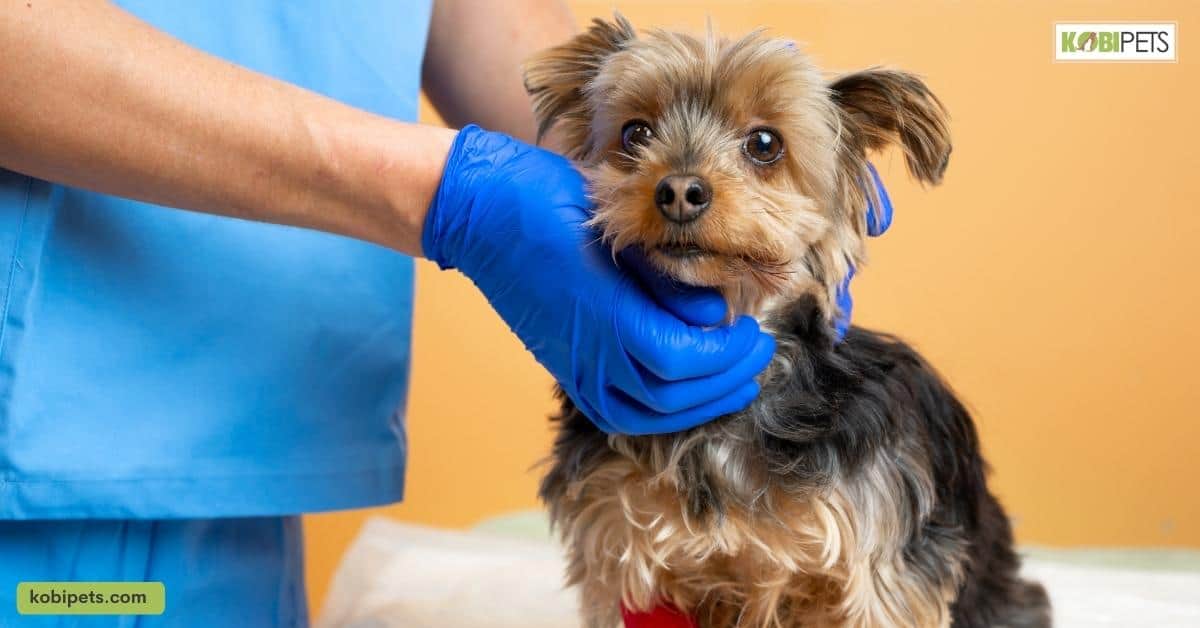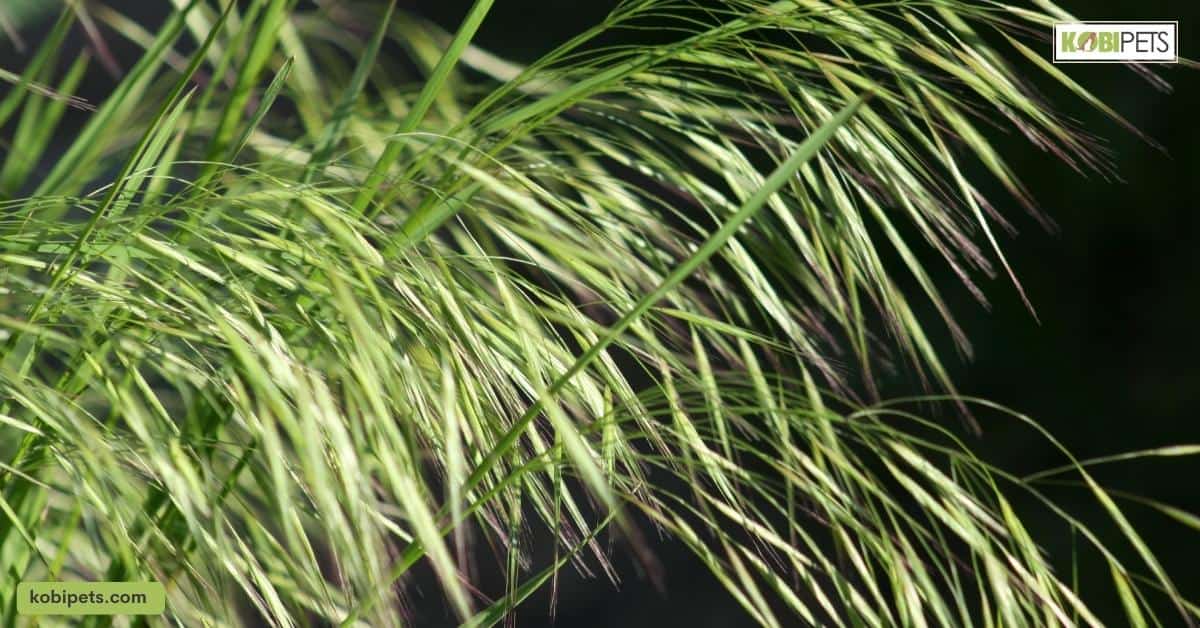Among the various threats our dogs face, foxtails and cheatgrass are some of the most common yet dangerous ones, especially during the warm months. These pesky plants can cause discomfort, infections, and sometimes serious health issues. So how can we keep our furry friends safe from these harmful grasses?
Protect your dog from foxtails and cheatgrass by maintaining a clean yard, avoiding high-risk areas during walks, keeping their coat clean and short, inspecting them daily for awns, and using protective gear like booties and field guards when necessary. Prevention is always better than cure.
What Are Grass Awns?
Grass awns are seed pods produced by certain types of invasive grasses like foxtails and cheatgrass. These pods are nature’s ingenious method of seed dispersal. Each plant can produce thousands of these awns that dry out and scatter in the summer.
A unique feature of these awns is their tiny barbs which allow them to latch onto animals and objects with ease, facilitating their spread over a larger area.
While this is an efficient propagation system for the plants, it poses significant risks to our dogs as these awns can attach themselves to our canine friends during their outdoor activities.
Why Are Grass Awns Dangerous to Dogs?
Grass awns pose a serious risk to dogs for several reasons. From physical discomfort to internal injuries, they can cause a series of health problems that every dog owner should be aware of.
Let’s delve into why these seemingly innocent plant pieces can be so hazardous to our furry companions.
How Do Grass Awns Impact a Dog’s Health?
The danger of grass awns stems from their ability to stick to a dog’s fur and penetrate the skin. The barbs on the awns help them to move forward, but not backward, allowing them to burrow deeper into your dog’s skin and other parts of their body.
The most common areas where grass awns get lodged are in a dog’s paws, skin, nostrils, ears, and eyes. In severe cases, they can even migrate through the body wall and into the chest and abdominal cavities.
The Body’s Reaction to Embedded Grass Awns
Once a grass awn is embedded, a dog’s body will react with inflammation as it attempts to wall off the area to contain the foreign object and avoid a potential infection. This process often results in the formation of an abscess, presenting as a painful, swollen lump where the grass awn is located.
Without timely and proper care, embedded grass awns can lead to serious infections and other complications, impacting the overall health and well-being of your dog.
Symptoms of Grass Awn Infection
Recognizing the signs of a grass-awn infection is crucial for early detection and treatment.
Symptoms may vary depending on the location of the embedded awn but can include excessive licking or chewing at a certain spot, head shaking or tilting if the awn is lodged in the ear, coughing, sneezing, or difficulty breathing if it’s in the nasal passage, and squinting or discharge if the awn has entered the eye.
Should you notice any of these symptoms, it’s essential to get your pet to a veterinarian as soon as possible.
Signs of Foxtail or Cheatgrass Problems in Dogs
Pets suffering from a foxtail or cheatgrass problem may exhibit several distinct signs that pet owners should be aware of. These symptoms can vary depending on the location of the embedded grass awn.
Here are some common signs that your dog might have a foxtail or cheatgrass problem:
- Pawing or scratching at a specific area: Dogs tend to paw or scratch at the site where a grass awn has become lodged. This might be an area on the skin, around the eyes, or inside the ears.
- Visible discomfort during walks: Dogs may start limping or show signs of discomfort during walks due to grass awns embedded in their paws or between their toes.
- Unusual shaking of the head: This could indicate that a grass awn has lodged itself in your pet’s ear, causing an uncomfortable sensation and prompting them to shake their head in an attempt to dislodge it.
- Bouts of sneezing or coughing: If your pet has a grass awn lodged in the nasal passage or throat, they may exhibit bouts of sneezing or coughing as they try to expel the foreign object.
- Unusual eye discharges or squinting: This could be a sign that a grass awn has gotten into your pet’s eye, causing irritation or even an infection.
If your pet exhibits any of these symptoms, it is advised to seek immediate veterinary care to ensure the prompt removal of any grass awns and to prevent any further complications.
Treatment for Grass Awn Problems
If your dog is unfortunate enough to get a grass awn lodged in its body, it’s important to know what treatment options are available. Although it can be alarming to see your pet in discomfort, understanding the process can help ease your worries and ensure your furry friend gets the necessary care.
The treatment depends on several factors including the location of the grass awn and the severity of the problem.
Let’s delve into the possible treatments that your vet may recommend to help your dog recover from a grass-awn problem.
Immediate Measures
If you suspect your dog has a grass awn problem, the first step is to try and locate the grass awn yourself. Gently inspect the affected area and if you can see the awn and it seems easy to remove, you could try to do so using tweezers.
However, be extremely cautious to avoid causing any further discomfort or injury to your dog.
Professional Veterinary Care
In case of severe discomfort, inability to locate the awn, or if the awn is lodged in a sensitive area like the eyes, ears, nostrils, or mouth, it is crucial to take your dog to a veterinarian promptly.
The vet will carry out a thorough examination, often employing imaging techniques such as X-rays or ultrasound to locate the grass awn if it’s not immediately visible.
Sedation and Awn Removal
Depending on the location of the grass lawn, your pet may need to be sedated to ensure a painless removal process. If the awn is suspected to be in the nasal cavity, a procedure called rhinoscopy might be performed.
This involves inserting a tiny camera through a tube into the nose, which helps to locate the awn and remove it using a small tool passed through the tube.
Post-Procedure Care
After the awn has been successfully removed, the vet will typically clean the area and may prescribe antibiotics to prevent infection. It is important to monitor your dog closely for a few days following the procedure to ensure proper healing and to watch for any signs of infection or complications.
Keep all follow-up appointments with your vet and don’t hesitate to contact them if you have any concerns about your dog’s recovery.
How to Protect Your Dog from Foxtails and Cheatgrass
Prevention is better than cure, and this principle certainly applies when it comes to protecting your dog from the hazards of foxtails and cheatgrass. As pet parents, we can take several proactive measures to minimize the risk posed by these pesky plants.
So, what can you do to ensure that your dog’s outdoor adventures are not marred by the threat of grass awns? Here are some practical tips and strategies to safeguard your furry friend.
Regular Yard Maintenance
Maintaining a clean and safe environment for your pet to play is a crucial step in preventing grass-awn problems. Regularly inspect your yard for the presence of foxtails and cheatgrass, and remove these weeds as soon as possible.
This can be done manually or with the help of a professional lawn care service.
Avoid High-Risk Areas
When taking your dog for walks, avoid dry, grassy fields and roadsides where these invasive grasses are likely to grow. Stick to well-trodden paths and parks that are regularly maintained and less likely to harbor these plants.
Keep Your Dog’s Coat Clean and Short
Regular grooming is not just about maintaining your dog’s appearance; it can also play a significant role in their health. Keeping your dog’s coat clean and well-groomed can help reduce the accumulation of grass awns.
Consider clipping their fur short, especially during the warm months when these plants are most prevalent.
Daily Inspections
Make it a habit to inspect your dog daily for any signs of grass awns. Pay particular attention to the areas between their toes and any hair mats, where grass awns are likely to hide.
If your dog has long hair, consider clipping the hair between their paw pads to further reduce the possibility of picking up grass awns.
Protective Gear
Consider investing in commercial protection products such as booties for your dog’s paws and field guards for their head. These products are designed to keep grass awns away from sensitive areas like the eyes, nose, mouth, and ears, particularly when your dog is out in the field.
In conclusion
While foxtails and cheatgrass pose significant risks to our beloved pets, there are numerous steps we can take to safeguard them. Regular yard maintenance, avoiding high-risk areas, maintaining a clean and short coat, performing daily inspections, and leveraging protective gear are all effective strategies to minimize the threat of these pesky plants. Remember, prevention is always better than cure.




















